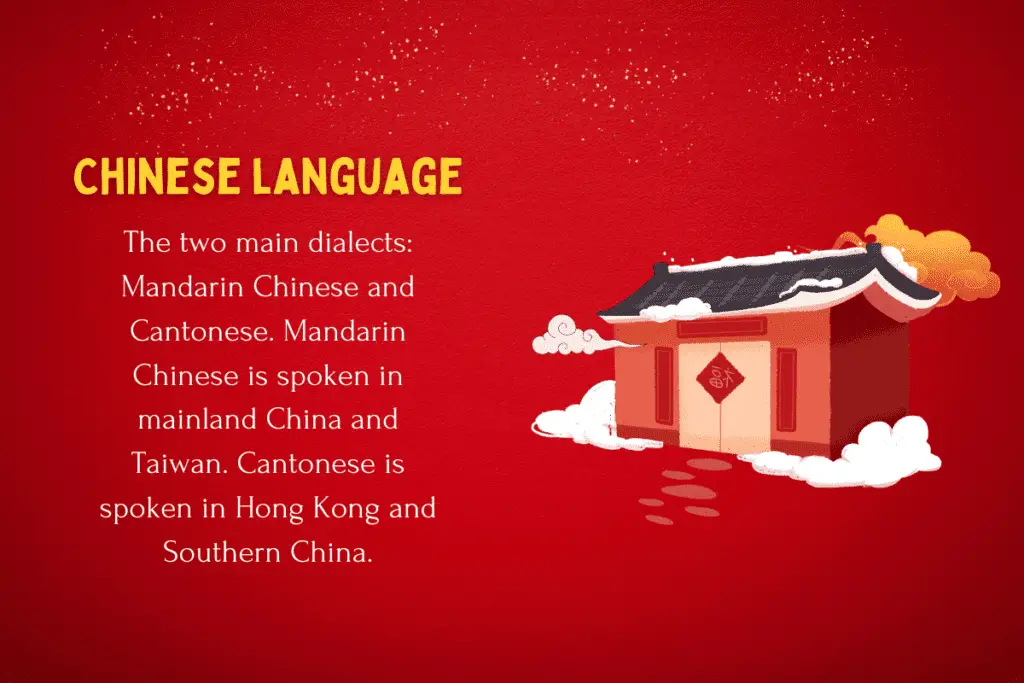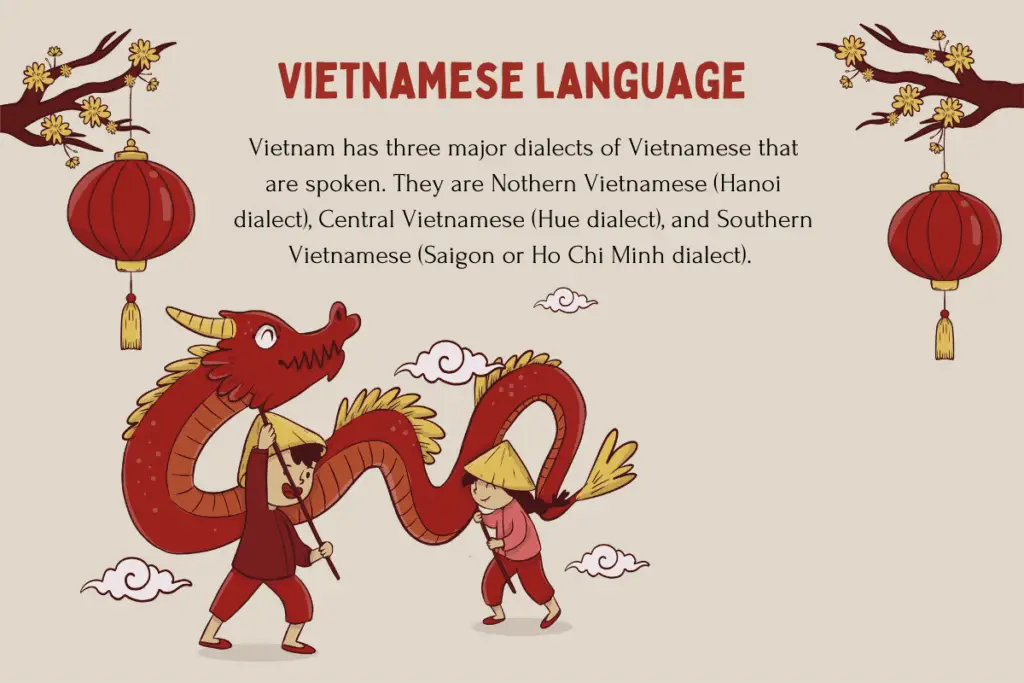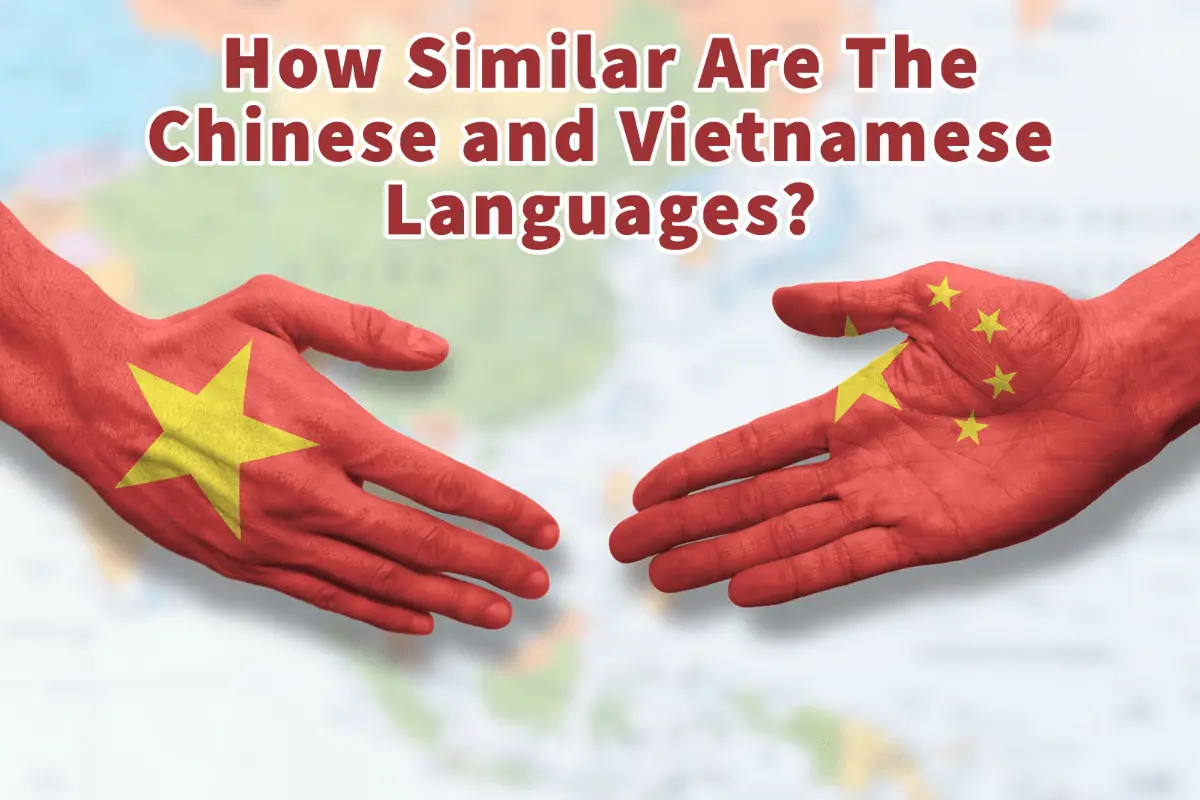I have studied both Mandarin Chinese and Vietnamese, so I know how similar both languages are; even though they are very different, they have similar characteristics.
Vietnamese and Chinese are Asian languages, though they come from different language families. Vietnamese and Chinese are both tonal languages and have similar sentence structures. They are monosyllabic languages, meaning that one word has one syllable, and several dialects are spoken.
Table of Contents
- Examining Linguistic Parallels: The Relationship Between Chinese and Vietnamese Languages
- Related Questions
Examining Linguistic Parallels: The Relationship Between Chinese and Vietnamese Languages
Understanding the relationship between the Chinese and Vietnamese languages involves delving into their historical, cultural, and linguistic connections. While they belong to different language families – Chinese to the Sino-Tibetan family and Vietnamese to the Austroasiatic family – their interactions over centuries have led to significant influences, especially in vocabulary and writing systems.
This exploration reveals the unique characteristics of each language and sheds light on how historical interactions have shaped their development. The analysis of these languages offers insights into the broader context of linguistic evolution in East Asia.
Vietnamese And Chinese Are Both Asian Languages
Both Vietnamese and Chinese are Asian-based languages. China and Vietnam are neighboring countries that have a long history together.

When discussing the Chinese dialects, we will discuss the two main dialects: Mandarin Chinese and Cantonese. Mandarin Chinese is spoken in mainland China and Taiwan. Cantonese is spoken in Hong Kong and Southern China.
Because China controlled Vietnam for over 1,000 years, the Chinese language influenced the Vietnamese just as the Chinese culture also influenced Vietnamese culture. But despite this, the Vietnamese language does not have its origin, nor is it a dialect or part of the Chinese language. The Vietnamese language comes from an entirely different language family.
Here are the language families of Chinese and Vietnamese:
- Mandarin Chinese – Is part of the Sinitic branch of the Sino-Tibetan language family.
- Cantonese Chinese is spoken in Southern China and is part of the Sino-Tibetan language family.
- Vietnamese – is part of the Austroasiatic language family and is under the subgroup of Vietic.
Vietnamese And Chinese Are Both Tonal Languages
Both Vietnamese and Chinese are tonal languages. This is where the similarities in tones start and begin.
- Mandarin Chinese has four significant tones.
- Cantonese Chinese is said to have six tones, though some say traditionally it is nine tones.
- Vietnamese has six tones, with five tones that are marked.
They have similar rising and falling tones but are very different languages, even with tonal similarities.
To speak Vietnamese or the Chinese language, you need to be able to hear the tones of the language. I have found that the most challenging part of speaking any of these languages is getting the tones correct.
For example, there are times when I have to speak Mandarin Chinese and Vietnamese, and the person listening to me will have this blank look on their face. Not because I didn’t speak the correct words but because the tones I was using for those words were completely wrong.
Vietnamese And Chinese Have Some Similar Grammar
One thing Vietnamese and Chinese have in common is their grammar is quite similar. When I say identical, I mean compared to learning English.
That is why if you speak Chinese, you may find it easier to understand and learn Vietnamese. Just like speaking Cantonese Chinese, you may find it easier to learn Mandarin Chinese or Vietnamese. This is because you will find a lot of similarities in the grammar.
Chinese and Vietnamese languages both use similar sentence structures. Their basic sentence structure is:
- Subject + Verb + Object
The basic sentence structure for each language is the same except when time, location, or duration are involved.
Subject structure when time, location, or time duration is involved will change as follows for Vietnamese and Chinese:
- The sentence structure can change regarding time, time duration, or location.
- Vietnamese– The subject structure would become Subject + Verb + Object + Time or change to Time + Subject + Verb + Object.
- Chinese – When time is involved in Chinese, the subject structure becomes Subject + time + Verb + Object.
- Sentence Structure For Time Duration
- Vietnamese – Subject + Verb + Object + Time Duration
- Chinese – Subject + Verb + Object + Verb + Time Duration
- Sentence Structure For Location
- Vietnam – Subject + Verb + Object + Location
- Chinese – Subject + Location + Verb + Object
As you can see, even though they have a similar sentence structure, the sentence structure can change regarding time, time duration, or location.
Vietnamese And Chinese Are Both Monosyllabic
Vietnamese and Chinese are both monosyllabic languages. Monosyllabic language means that every word has a single syllable.
Being a monosyllabic language is very different from English, where one word in English can have two or even more syllables.
Vietnamese And Chinese Both Have Dialects That Are Spoken
Both Vietnamese and Chinese have different spoken dialects. In particular, China can have many different dialects in different parts of China. This is why you may find that when you go from the south to the north or the east to the west in China, the Chinese language does not sound the same but may be very different.
When I visited northern China with some of my southern Chinese staff, they sometimes had difficulty understanding the local dialects spoken by some of the people in northern China. This is one reason why the official language of China is Putonghua or Mandarin Chinese, not one of these dialects.
We can say the two primary dialects in Chinese is Putonghua or Mandarin Chinese and Cantonese.

On the other hand, Vietnam has three major dialects of Vietnamese that are spoken. They are Nothern Vietnamese (Hanoi dialect), Central Vietnamese (Hue dialect), and Southern Vietnamese (Saigon or Ho Chi Minh dialect). Within Vietnam, some of these dialects will even use different words to describe the same thing; the dialects are not just the accent but what words are used.
Despite all the similarities, a Vietnamese person cannot understand Chinese unless they have studied Chinese, and a Chinese person cannot understand it unless they have studied it.
The languages may have some similarities, but they are not similar enough for the two countries to understand each other when speaking their native language and in their native tongue.
At A Bus On A Dusty Road, we talk about everything about travel, life, and ex-pat living. We are all about “Living Life As A Global Citizen.” We explore social, cultural, and economic issues and travel.
We would love to have you be part of our community. Sign up for our newsletter to keep up-to-date by clicking here. If you have any questions, you can contact me, Anita, by clicking here.
Listen to our Podcast called Dusty Roads. You can find it on all major podcast platforms. Try out to listen to one of our podcasts by clicking here.
Subscribe to our A Bus On A Dusty Road YouTube Channel filled with great videos and information by clicking here.
Related Questions
What Is The Official Language Of Hong Kong?
The official language of Hong Kong is Chinese and English. The residents of Hong Kong are native Cantonese Chinese speakers, so the official language is Cantonese Chinese. Many in Hong Kong can also speak Mandarin Chinese; many local Hong Kong residents prefer to speak Cantonese Chinese or English.
By clicking here, you can discover What Is The Official Language Of Hong Kong?.
How Closely Related Are The Thai And Vietnamese Languages?
Thai and Vietnamese are both Asian-based languages, but despite being Asian-based, they are from different language family groups. Both Thai and Vietnamese are tonal languages and are analytic languages.
By clicking here, you can discover How Closely Related Are The Thai And Vietnamese Languages?.


